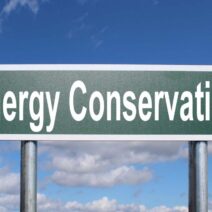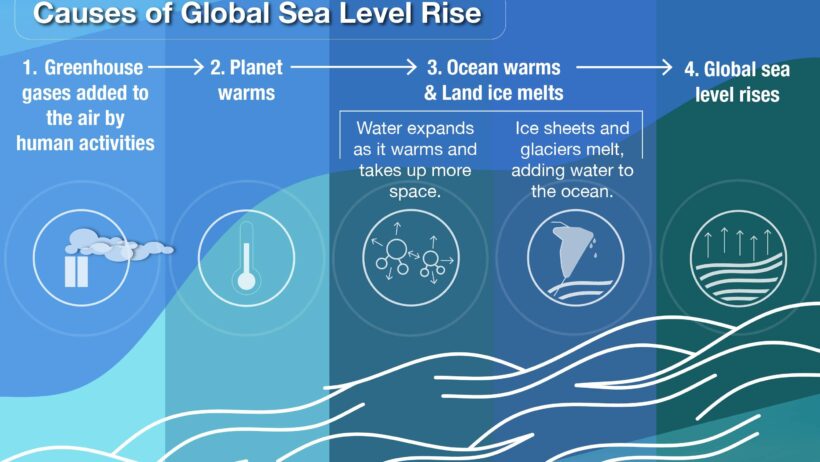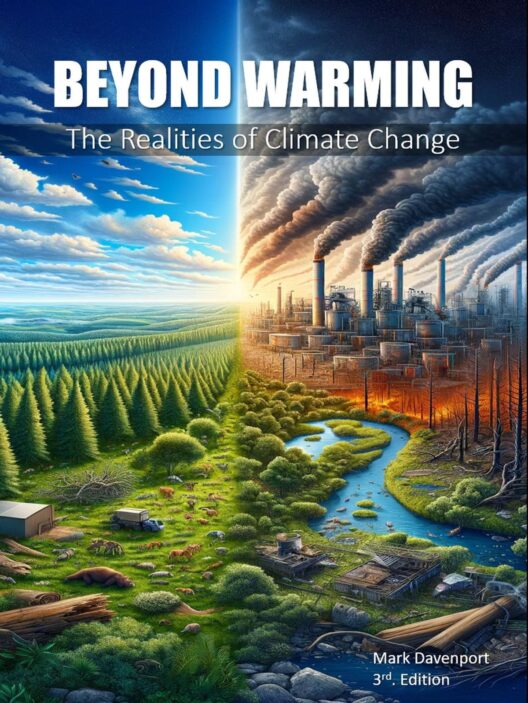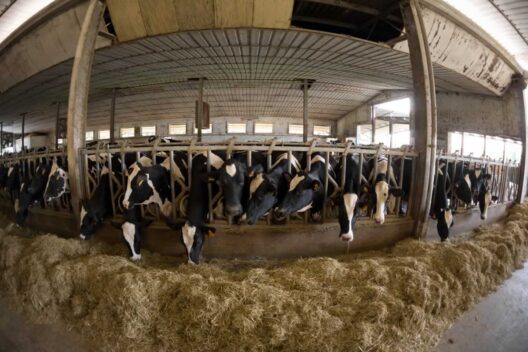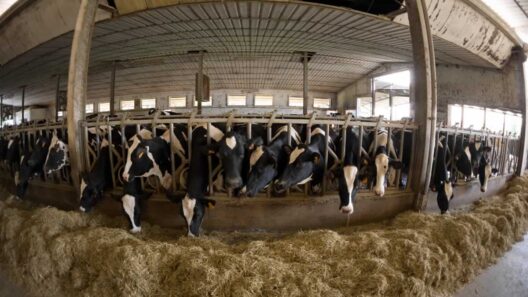The intricate relationship between rising sea levels and global warming has captured the attention of scientists, policymakers, and environmental advocates alike. A myriad of factors contributes to this complex interaction, often leading to confusion about causation. Does rising sea level cause global warming, or is it an effect of a warming planet? This discourse delves into the mechanisms of both phenomena, offering a comprehensive analysis of their interdependence.
First, it is essential to understand what is meant by “global warming” and “rising sea levels.” Global warming refers to the long-term increase in Earth’s average surface temperature due to human activities, primarily the emission of greenhouse gases such as carbon dioxide and methane. This increase in temperature leads to a cascade of environmental changes, including glacial melt and thermal expansion of seawater, both of which contribute to rising sea levels.
On the other hand, rising sea levels are a consequence of this warming. The Intergovernmental Panel on Climate Change (IPCC) reports that global sea levels have risen significantly over the past century, primarily due to two processes: the melting of ice sheets and glaciers and the expansion of seawater as it warms. These phenomena are not isolated; rather, they complement each other in a cycle that perpetuates climate change.
One might wonder if the rising sea levels could, in turn, exacerbate global warming. This notion is supported by certain feedback mechanisms that can amplify warming effects. For example, as sea levels rise, coastal areas that are typically covered by land may become submerged. This leads to the release of previously trapped carbon and methane from permafrost and wetlands, subsequently increasing greenhouse gas concentrations in the atmosphere.
Furthermore, the loss of sea ice and the additional exposure of darker ocean waters create a phenomenon known as the albedo effect. The albedo effect describes how different surfaces reflect sunlight. Ice and snow, with their high reflectivity, bounce back most of the sun’s energy, whereas open water absorbs it, further heating the surrounding area. This process can create a feedback loop where rising temperatures lead to reduced ice cover, which then leads to more heat absorption and accelerated warming.
Yet, this discourse also allows for the consideration of climate change as a multifactorial phenomenon influenced by various other human activities and natural processes. Urbanization, deforestation, and industrial practices, for example, significantly contribute to carbon emissions. These activities further accelerate the warming trend, leading to rising sea levels as an indirect consequence rather than a direct causal relationship.
In observing the intricate interplay between these processes, a deeper fascination emerges. A common observation is the paradox that while local effects of rising sea levels are highly visible—such as coastal erosion and increased flooding—the more insidious impacts of global warming often manifest through slow, incremental changes. This discrepancy between immediacy and gradualism adds complexities to public understanding and responses to climate change.
As these dynamics unfold, it becomes increasingly crucial to recognize the socio-economic implications. Coastal cities, which are often densest population zones, face the brunt of rising sea levels. Infrastructure, homes, and vital ecosystems are at risk, prompting urgent calls for mitigation and adaptation strategies. The displacement of communities due to rising tides not only poses ethical questions but also pressures governments and organizations to address the inevitable socio-economic consequences.
Interestingly, the discussion around rising sea levels and global warming also reveals disparities in regional vulnerabilities. Areas such as the Caribbean and Southeast Asia are disproportionately affected due to their geographic and socio-economic contexts. Elevated sea levels can lead to saline intrusions, compromising freshwater sources and threatening agriculture. Thus, the intertwined narratives of rising sea levels and global warming extend far beyond environmental science debate; they delve into realms of justice, equity, and human survival.
Additionally, a vital component of this discourse is the scientific community’s ongoing research to clarify and predict these phenomena. Advanced modeling techniques and satellite observations are essential in tracking changes in both temperature and sea levels. Utilizing these tools allows researchers to forecast potential future scenarios based on current trends, aiding in policymaking and resource allocation to address the impending challenges posed by climate change.
The conclusion is that rising sea levels are predominantly a consequence of global warming rather than the other way around. However, the relationship is undoubtedly bidirectional, with certain feedback mechanisms capable of complicating this straightforward narrative. Understanding the profound nuances between these two phenomena reveals not only the scientific intricacies involved but also the broader social implications that call for immediate global action.
In summary, the interaction between rising sea levels and global warming is emblematic of the larger dialogue on climate change. This relationship illustrates how interconnected our environmental systems are, emphasizing the importance of holistic approaches to climate policy. Addressing the challenges posed by these changes requires an earnest commitment from individuals, communities, governments, and global organizations alike. Only through collaborative efforts can we hope to mitigate the damaging effects of climate change and build a sustainable future for all.


